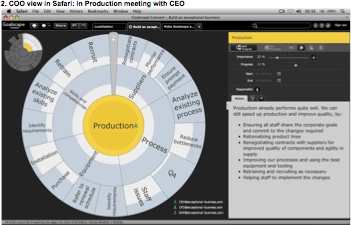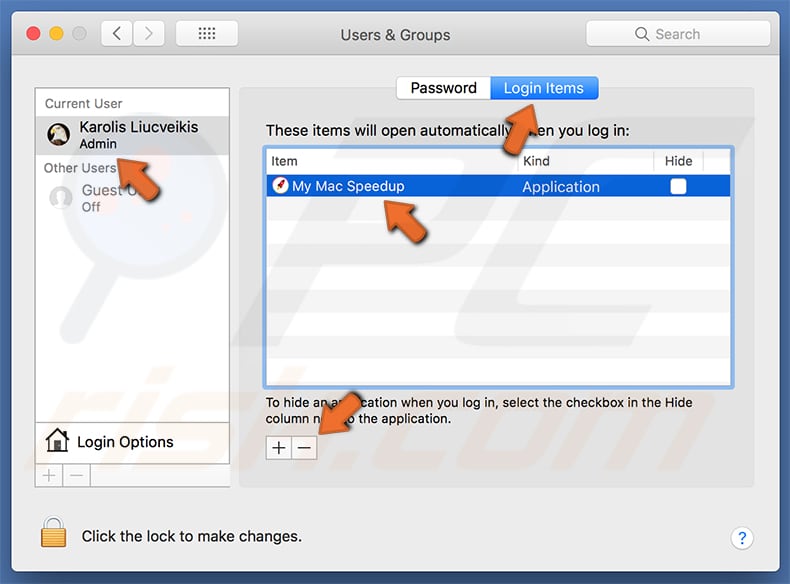The virus scanner itself is very easy to use and can be used quickly without any customizations. From the On-demand scan page, just choose the option you want to use: Smart scan to check only some areas for malware—specifically, common locations malware is found; or choose Custom scan to run an in-depth, full scan of any area of the drive, including the whole thing. Protect your Mac from malware. MacOS has many features that help protect your Mac and your personal information from malicious software, or malware. One common way malware is distributed is by embedding it in a harmless-looking app. You can reduce this risk by using software.
Macs don’t get viruses, right? Wrong, sadly. Your Mac may be safer from malware than the average Windows PC, thanks to its Unix core and Apple’s default security settings in the OS, but it’s not immune. All it takes is one thoughtless click on a link in an email or on a website, and your Mac could be infected.
The good news is that performing a Mac virus scan is very easy and if it finds anything, getting rid of the virus is very straightforward, too.
How to check your Mac for a virus
There are a number of tell-tale signs that your Mac has a virus. If it’s not displaying any of those, there’s probably nothing to worry about. So, before you scan your Mac for a virus, here are a few things to check.
1. Is your Mac behaving erratically?
This could include applications crashing, web browsers loading pages you didn’t ask for, and unusually high traffic on your network.
2. Has it started running very slowly all of a sudden?
Some viruses run processes that hog CPU cycles and leave little capacity for the tasks you want to carry out.
3. Are you seeing adverts or pop-ups for things you would never normally see?
List Of Mac Virus Scan Software Update
Adware viruses are designed specifically to show adverts in the hope that you’ll click on them.
4. Have you noticed software appear on your Mac that you didn’t deliberately install?
Some viruses appear in the form of browser extensions, others run in the background, but some may appear as applications in your Applications folder.
If any of the above are true, it’s possible that your Mac has a virus, but don’t panic, it may be relatively easy to remove.
How to get rid of suspicious apps
If you find an application that you didn’t intend to install, you should get rid of it. But don’t just drag it from your Applications folder to the Trash, that won’t remove every trace of it from your Mac. Applications store files in a number of different places in your Mac’s Library folders. You could hunt them down and remove them manually, but it’s quicker and easier to use a dedicated uninstaller like CleanMyMac X. That way, you can be sure you will remove every trace of the application and no stray files will be left behind.

- Download CleanMyMac for free here.
- Launch it from your Applications folder.
- In the Utilities section, click on Uninstaller.
- Look through the list of applications until you see the one you want to get rid of.
- Check the box next to it.
- Press the Uninstall button.
How to run a malware scanner on Mac
There are several Mac virus scanners that allow you to scan your system. However, it’s very important that you don’t just google ‘free Mac antivirus software.’ Many sites that claim to offer free antivirus tools in fact host viruses themselves. So, you go to the site looking for a solution and end up making the problem worse. It’s important to use a reputable tool. We recommend using CleanMyMac X.
List Of Mac Virus Scan Software 2017
CleanMyMac X detects thousands of malware threats, including adware, spyware, worms, ransomware, cryptocurrency miners, and if it finds something suspicious, it offers immediate removal. Here’s how to scan your Mac for malware:
- Download CleanMyMac X (free download) and launch the app.
- Click on the Malware Removal tab.
- Click Scan.
- Click Remove.
Malware Monitor is another thing I love about CleanMyMac X. And it works in real-time. Whenever an adware attempts to enter some protected areas on your Mac, you’ll get instantly notified.
How to prevent your Mac from getting a virus

Prevention is always better than cure. So, if you want to make sure that every virus scan returns a clean bill of health, here’s what to do.

- Never click a link in an email unless you’re 100% sure where the email has come from and where the link will take you. Reputable companies and banks won’t ask you to click a link to log into an account, for example.
- Never download anything unless you’re certain what it is. That includes movie files, software updates, games, and anything else you’re not absolutely certain about.
- Keep your Mac updated with the latest version of macOS. That doesn’t mean you have to be running the very latest OS, but if you’re running, say, Sierra, make sure you install the latest updates when they become available.
Scanning your Mac for threats is very easy. Get CleanMyMac X to make your Mac as safe as new. With its help, you get rid of any applications you didn’t intend to download, and scan your whole system for malware very quick and easy. Give it a go.
These might also interest you:
I determined Intego to cause horrid effects on a brand new Mac's performance, much more so than even more notorious junk software. If you want your Mac to run well, avoid all such garbage. The vast majority of Mac problems reported on this site are the direct result of using ill-conceived third party 'anti-virus' or 'security' junk.
OS X already includes everything it needs to protect itself from viruses and malware. Keep it that way with software updates from Apple.
A much better question is 'how should I protect my Mac':
- Never install any product that claims to 'speed up', 'clean up', 'optimize', or 'accelerate' your Mac. Without exception, they will do the opposite.
- Never install pirated or 'cracked' software, software obtained from dubious websites, or other questionable sources. Illegally obtained software is almost certain to contain malware.
- Don’t supply your password in response to a popup window requesting it, unless you know what it is and the reason your credentials are required.
- Don’t open email attachments from email addresses that you do not recognize, or click links contained in an email:
- Most of these are scams that direct you to fraudulent sites that attempt to convince you to disclose personal information.
- Such 'phishing' attempts are the 21st century equivalent of a social exploit that has existed since the dawn of civilization. Don’t fall for it.
- Apple will never ask you to reveal personal information in an email. If you receive an unexpected email from Apple saying your account will be closed unless you take immediate action, just ignore it. If your iTunes or App Store account becomes disabled for valid reasons, you will know when you try to buy something or log in to this support site, and are unable to.
- Don’t install browser extensions unless you understand their purpose. Go to the Safari menu > Preferences > Extensions. If you see any extensions that you do not recognize or understand, simply click the Uninstall button and they will be gone.
- Don’t install Java unless you are certain that you need it:
- Java, a non-Apple product, is a potential vector for malware. If you are required to use Java, be mindful of that possibility.
- Disable Java in Safari > Preferences > Security.
- Despite its name JavaScript is unrelated to Java. No malware can infect your Mac through JavaScript. It’s OK to leave it enabled.
- Block browser popups: Safari menu > Preferences > Security > and check 'Block popup windows':
- Popup windows are useful and required for some websites, but popups have devolved to become a common means to deliver targeted advertising that you probably do not want.
- Popups themselves cannot infect your Mac, but many contain resource-hungry code that will slow down Internet browsing.
- If you ever see a popup indicating it detected registry errors, that your Mac is infected with some ick, or that you won some prize, it is 100% fraudulent. Ignore it.
- Ignore hyperventilating popular media outlets that thrive by promoting fear and discord with entertainment products arrogantly presented as 'news'. Learn what real threats actually exist and how to arm yourself against them:
- The most serious threat to your data security is phishing. To date, most of these attempts have been pathetic and are easily recognized, but that is likely to change in the future as criminals become more clever.
- OS X viruses do not exist, but intentionally malicious or poorly written code, created by either nefarious or inept individuals, is nothing new.
- Never install something without first knowing what it is, what it does, how it works, and how to get rid of it when you don’t want it any more.
- If you elect to use 'anti-virus' software, familiarize yourself with its limitations and potential to cause adverse effects, and apply the principle immediately preceding this one.
- Most such utilities will only slow down and destabilize your Mac while they look for viruses that do not exist, conveying no benefit whatsoever - other than to make you 'feel good' about security, when you should actually be exercising sound judgment, derived from accurate knowledge, based on verifiable facts.
- Do install updates from Apple as they become available. No one knows more about Macs and how to protect them than the company that builds them.
Summary: Use common sense and caution when you use your Mac, just like you would in any social context. There is no product, utility, or magic talisman that can protect you from all the evils of mankind.